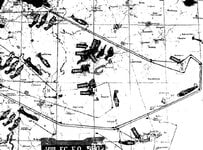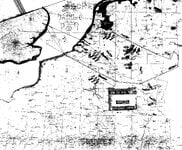Wild_Bill_Kelso
Senior Master Sergeant
- 3,231
- Mar 18, 2022
It was a land-based medium bomber that could occasionally carry a torpedo. Go look at the photos of Betty bombers. You won't find any showing a torpedo or torpedo loading. The only torpedo depictions you see are artwork drawings.
The only decently notable torpedo attacks were on the Prince of Wales and the REPULSE. Most of the rest of the time it dropped bombs or flew reconnaissance missions. Yes, it made torpedo runs. No, not very often.
You're just trolling, Bill. It isn't really very well camouflaged.
Good job, though, Kelso.
Cheers.
I'm not trolling at all. I was just reading about a battle (I think I posted a link?) in early 1943 where G4M and G3M bombers sunk some American ships with torpedoes. The idea that G4m carrying a torpedo was rare is very new to me. You think it's a strategic bomber meant for bombing cities like a B-29?


![355fg FO 570 445th error map [dewey].jpg](/forum/data/attachments/779/779821-554a7fa50399d9753f49df94ac407159.jpg)



